Art Is More Magical Than Secret. Interview with Luke Turner from the Art Collective LaBeouf, Rönkkö & Turner
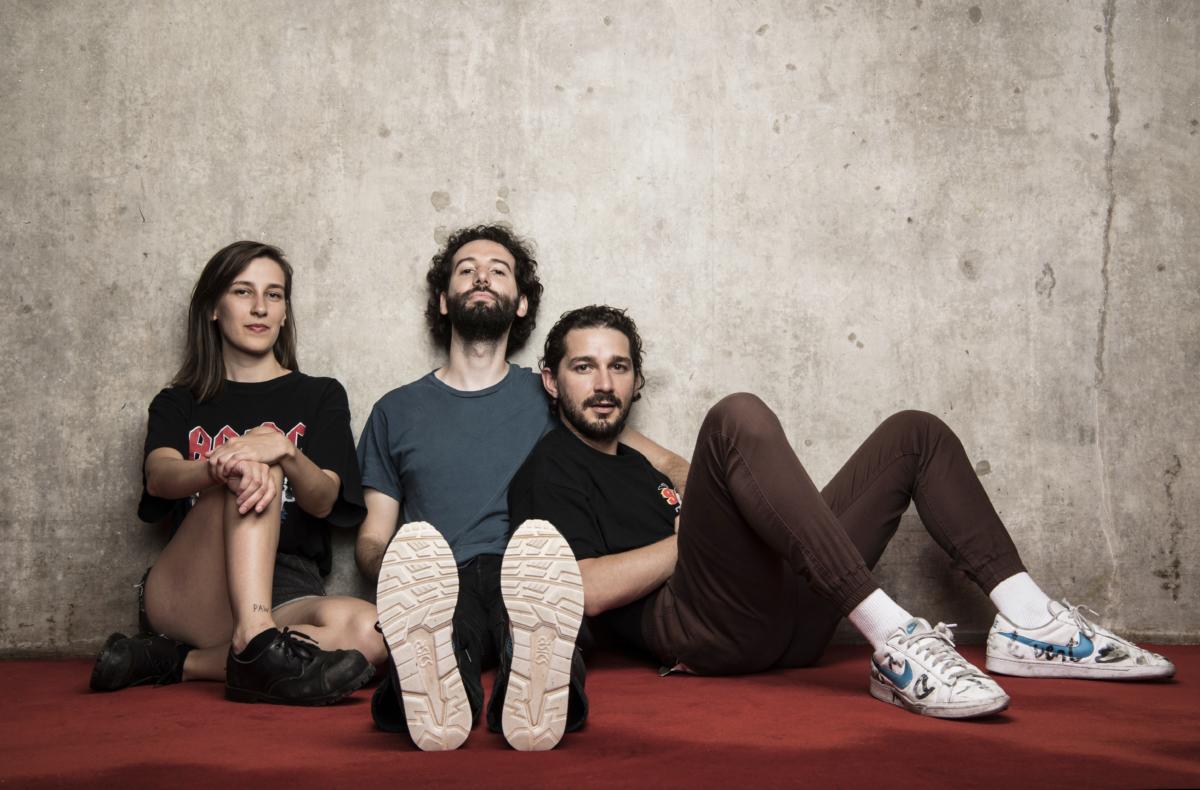
Zofia Cielątkowska: You work together as a trio. How would you describe each of you in the collective?
Luke Turner: We really work together as a single unit, but of course the different skills and experiences we each bring are essential to that. Before I went to art school, I was making work on the early internet. I think that’s when I first began questioning how we engage; how we can work together collectively. Nastja and I both went to Saint Martins; she began developing her performance practice, and I was exploring image-based work, and it was great to exchange ideas. Shia has a background of being in front of the camera, as an actor and performer, and us working together also brings the added scope of reaching a wide audience. The three of us are always pulling in the same direction.
In most of your performances, you keep very open participatory form except for the one element: the time. I believe it structures the work.
Yes, definitely. Our performances usually revolve around a simple question or proposition, an invitation to the public to participate. But how they choose to engage from there is left very open. It’s useful to have a beginning and end point to structure these performances, as the artwork creates a kind of framework; a space inside which anything can happen. And within that there are all kinds of negotiations, conversations, emotions, and engagements. The durational aspect concentrates things into a kind of activated art space. We try not to be too precious about what the artwork is, where its limits lie, and give people as much time as they need within that. We’re letting them shape the work through their participation.
We do live in very troubling times, facilitated by our devices and social media. It matters how we use this, how we position ourselves within those networks, and what connections we deem constructive.
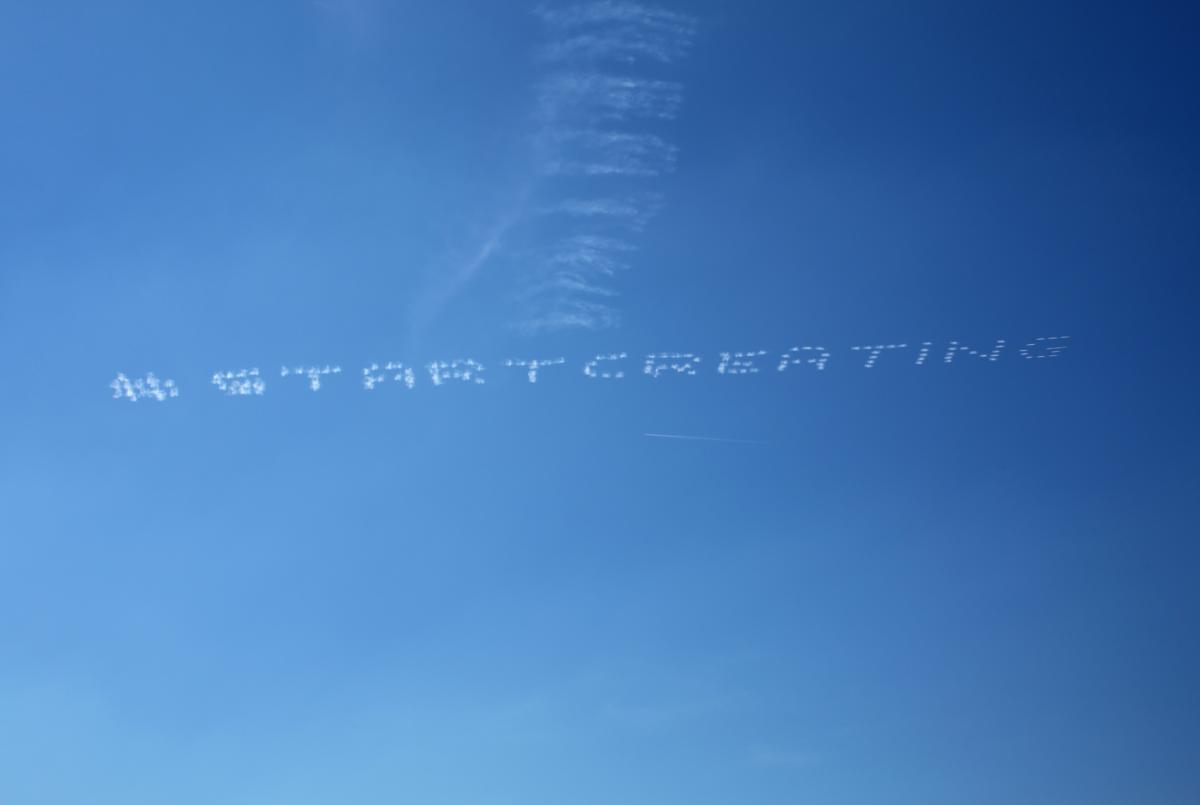
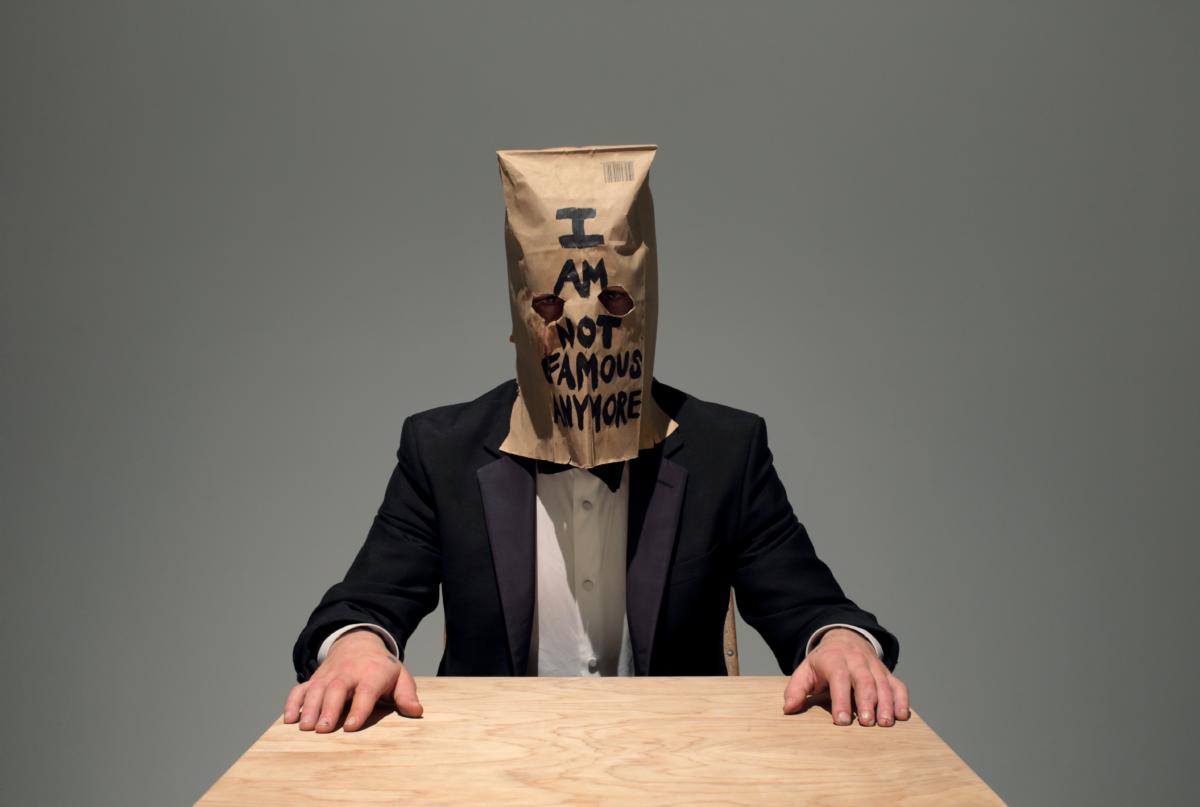
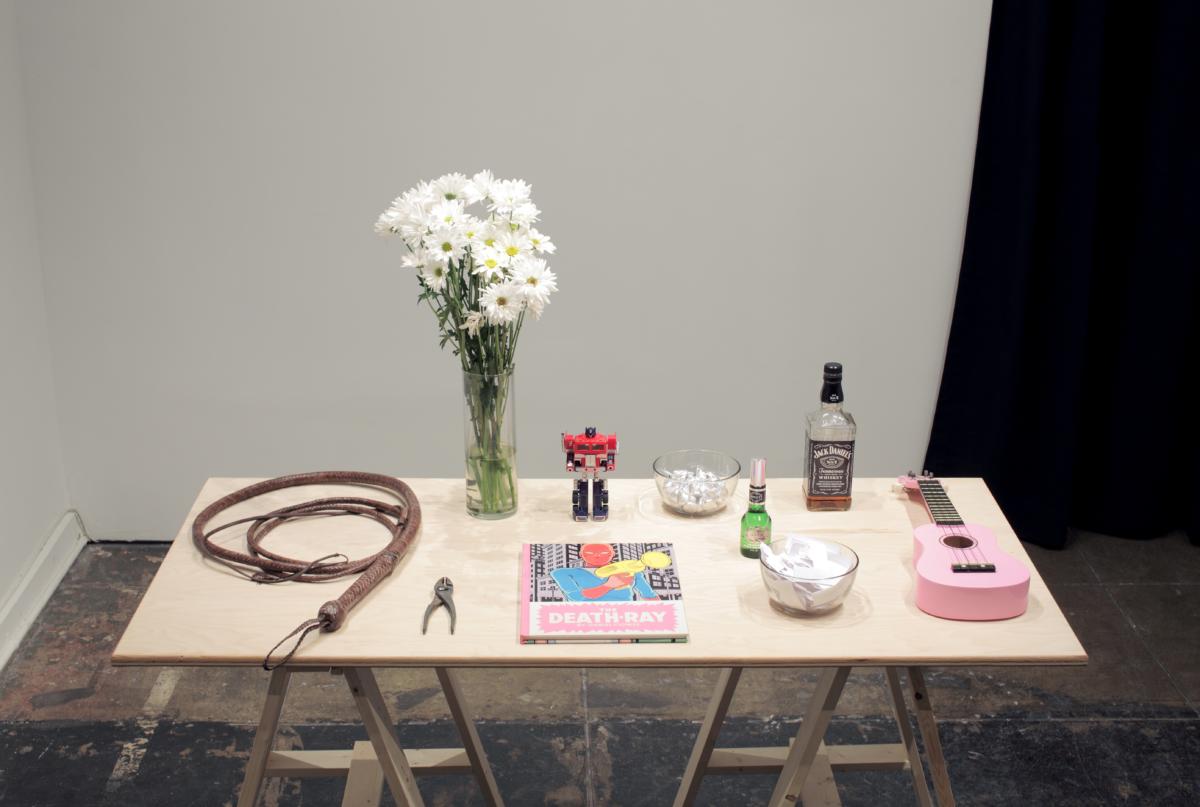
People can participate in your performances in various ways; be it talking to you on a phone and ‘touching your soul’ (#TOUCHMYSOUL, 2015, Foundation for Art and Creative Technology, Liverpool), offering words of wisdom (#ANDINTHEEND, 2016, Sydney Opera House), or acting as your sole human connection (#ALONETOGETHER, 2017, Kiasma, Helsinki). Technology is an important element. You are quite optimistic in terms of the media and the use of the internet?
Well, I’m an optimist and a realist at the same time. For me, the internet is very real; it is life. Everything we do there has an effect on the rest of reality, and everything there is connected. There are enough people doing positive things, I think—a majority of people. Of course, people acting negatively can also find themselves a large platform online by shouting the loudest, but there’s always push and pull. We are social animals, and the internet is just an extension of that nature.
Sometimes people don’t see that connection…
We do live in very troubling times, facilitated by our devices and social media. It matters how we use this, how we position ourselves within those networks, and what connections we deem constructive.
Like in the case of #TAKEMEANYWHERE
#TAKEMEANYWHERE actually came about in response to an invitation from BMoCA, centred around the theme of Corruption. We see our practice, however, as working against the corrupting aspects of technology, and we’re enacting a sort of informed naivety. So our proposal was to try to make something founded on trust in people, in community, and the collective desire to create something meaningful. We see our practice, however, as working against the corrupting aspects of technology, and we’re enacting a sort of informed naivety. So our proposal was to try to make something founded on trust in people, in community, and the collective desire to create something meaningful.
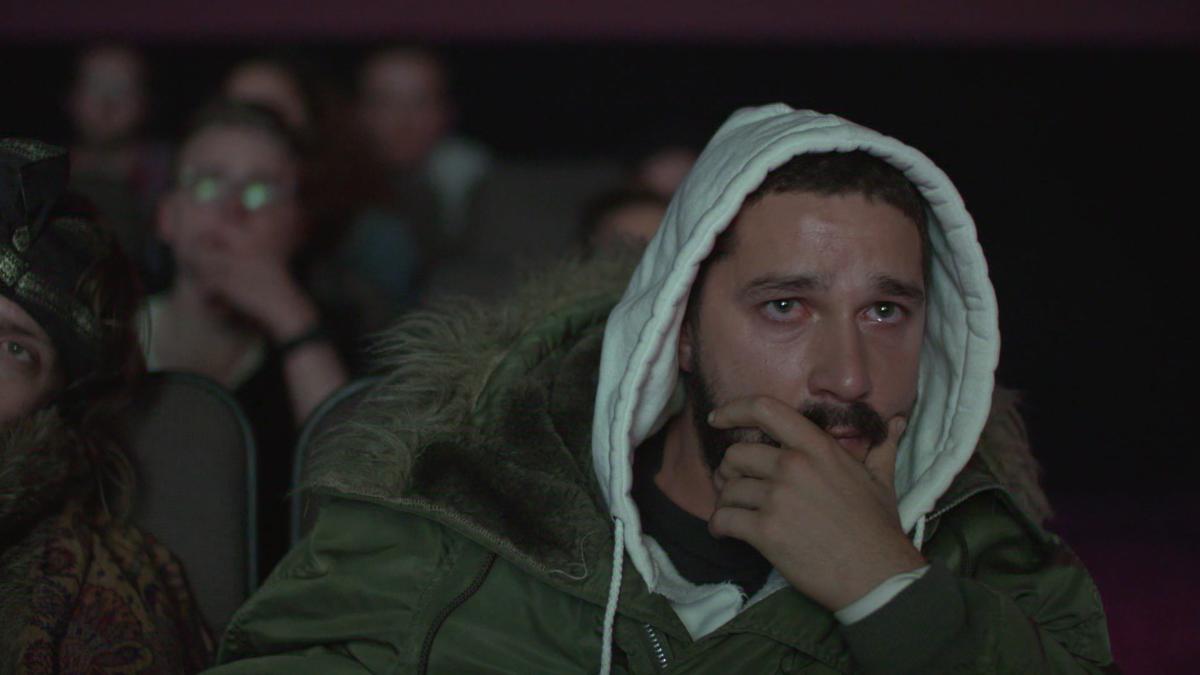
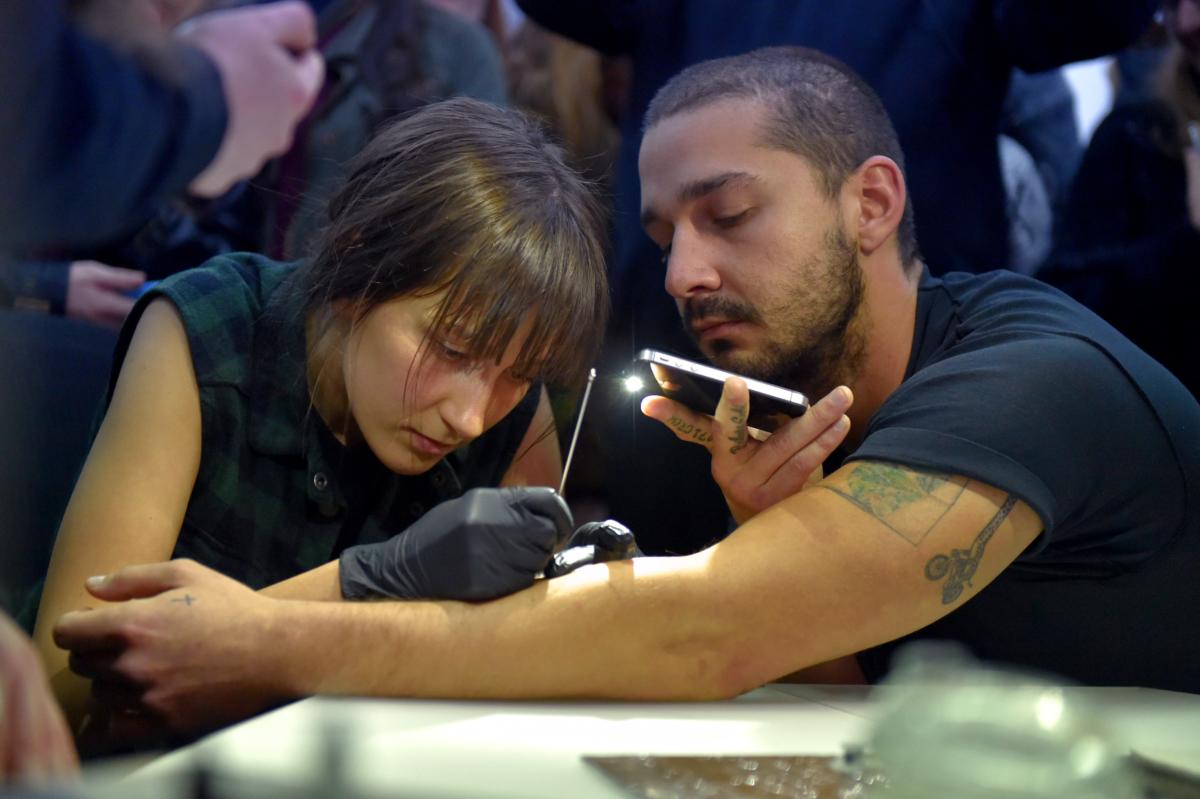
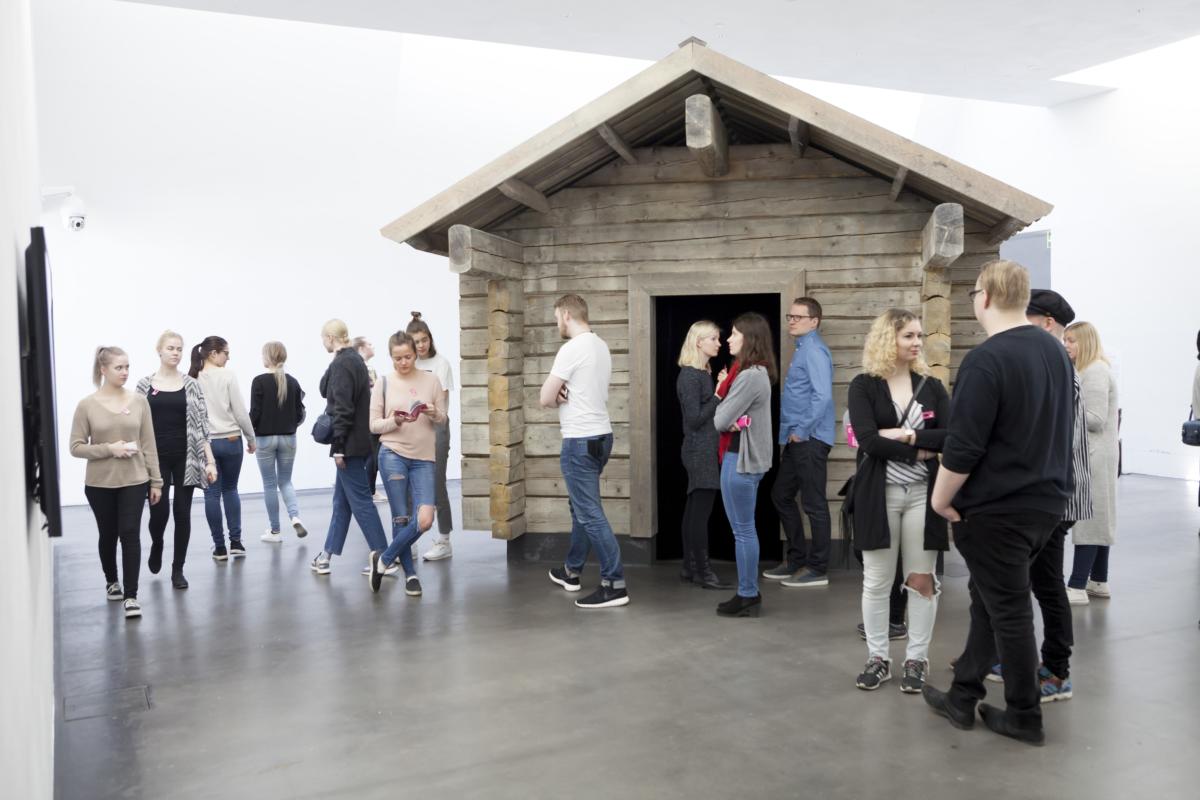
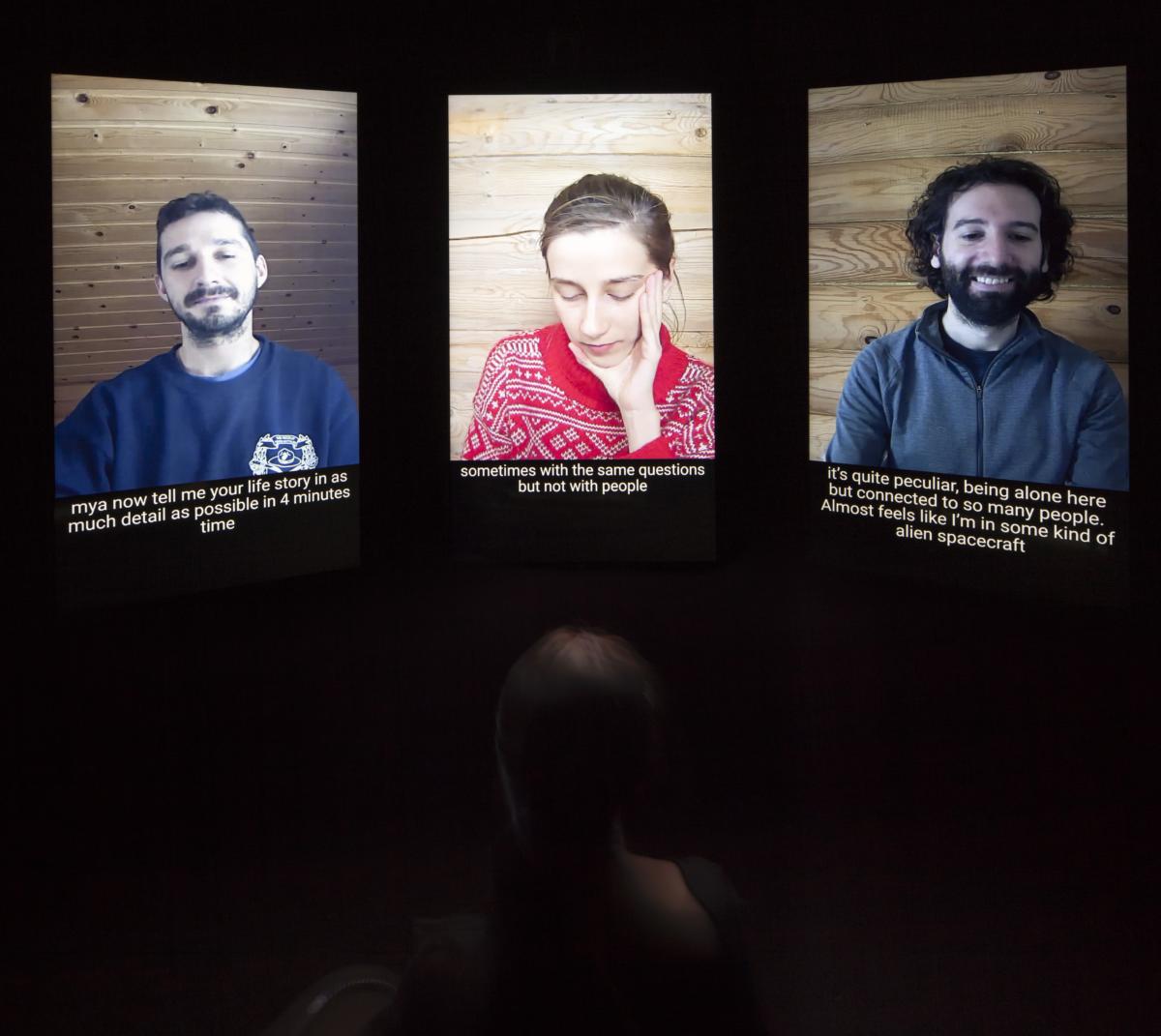
I always feel there is this fluid or ambiguous status of the camera eye, or of the documentation of the performance. As, at the end of the day, is it for the exchange of real emotion, being together, and participation or for the picture?
HEWILLNOTDIVIDE.US is actually the first work of ours where we chose to broadcast both audio and video together, without one or the other being held back. But I think the question is also what happens beyond the frame. During works like #ALLMYMOVIES and #TAKEMEANYWHERE for example, I was behind the camera most of the time, yet that is equally part of the performative space. In those works, most things are actually happening beyond the camera’s sight, but it’s revealing to observe how people behave if and when they cross that threshold and into public view. In terms of #TAKEMEANYWHERE, I would say that 99% of the performance is actually beyond what is captured in the film. We didn’t want to make it as a straight documentary, but more of a postcard or a love letter from the road, giving a sense of the beauty and randomness of the trip. The film itself is just the tip of the iceberg for the work, and it’s the community that formed around the project—still deeply connected and in constant contact—that is the real soul of the work.
But there are also other examples with no documentation…
Yes, we’ve also done performances in which there has been no recording whatsoever, such as #IMSORRY, except for a single photograph of Nastja, and one of Shia wearing the paper bag mask. In the performative talk we gave at Oxford University (#ELEVATE), we broadcast only audio, while we engaged with people inside the elevator for 24 hours. It was interesting to find that most people behaved as if we were the only people listening, because they couldn’t see any audience directly, even though they knew it was being broadcast. And as a result, people were honest and sincere to an extraordinary degree. We also did a performance at the Sydney Opera House (#ANDINTHEEND) that was largely broadcast without sound, and as a result some of the conversations became very personal and private. Almost like a therapy. There’s also the physical aspect of being there, which is really important. Like in the cases of #IAMSORRY and #ALLMYMOVIES, queuing became a key aspect of the work, and little communities pop up in the line whenever we do these things. We even heard of one couple who got married after meeting in line at #IAMSORRY, and another who met during HEWILLNOTDIVIDE.US. It adds another layer to those works. All these things that start to form on a human level are, I think, the most important aspect of our practice.
There is this piece I AM NOT FAMOUS ANYMORE (2014), where Shia arrived on the red carpet wearing the paper bag on his head. As a viewer of this – let’s say – a video performance, you get straight at your face all of these objectifying, violent screams. If you are an art critic or an art historian and you see a related piece that you did just 24 hours after – #IAMSORRY (2014), it is quite natural to have an association with Rhythm Zero of Marina Abramović. In the case of your work, the ‘objectifying’ or ‘violent’ element is in the system itself.
I AM NOT FAMOUS ANYMORE, and then #IAMSORRY were almost like an inverse of Abramović’s work. Here was Shia as someone already objectified to the degree, with the violence that goes with one’s persona being owned, in a sense, by the public. Our starting point was to reject this, rather than treat it as an end. We were also inverting the kind of artist-genius persona of The Artist is Present. In our work, there was no Artist with a capital ‘A’ to be present, there was no spectacle within the gallery, removed from the outside media hysteria. The performance in the gallery was not made for the cameras. We wanted to create a space of real intimacy and the intensity of genuine human connection. It was a rejection of outmoded notion of the artist with a capital ‘A’, there to be revered, and the kind of deadpan ‘performance mode’ that negates humanity.
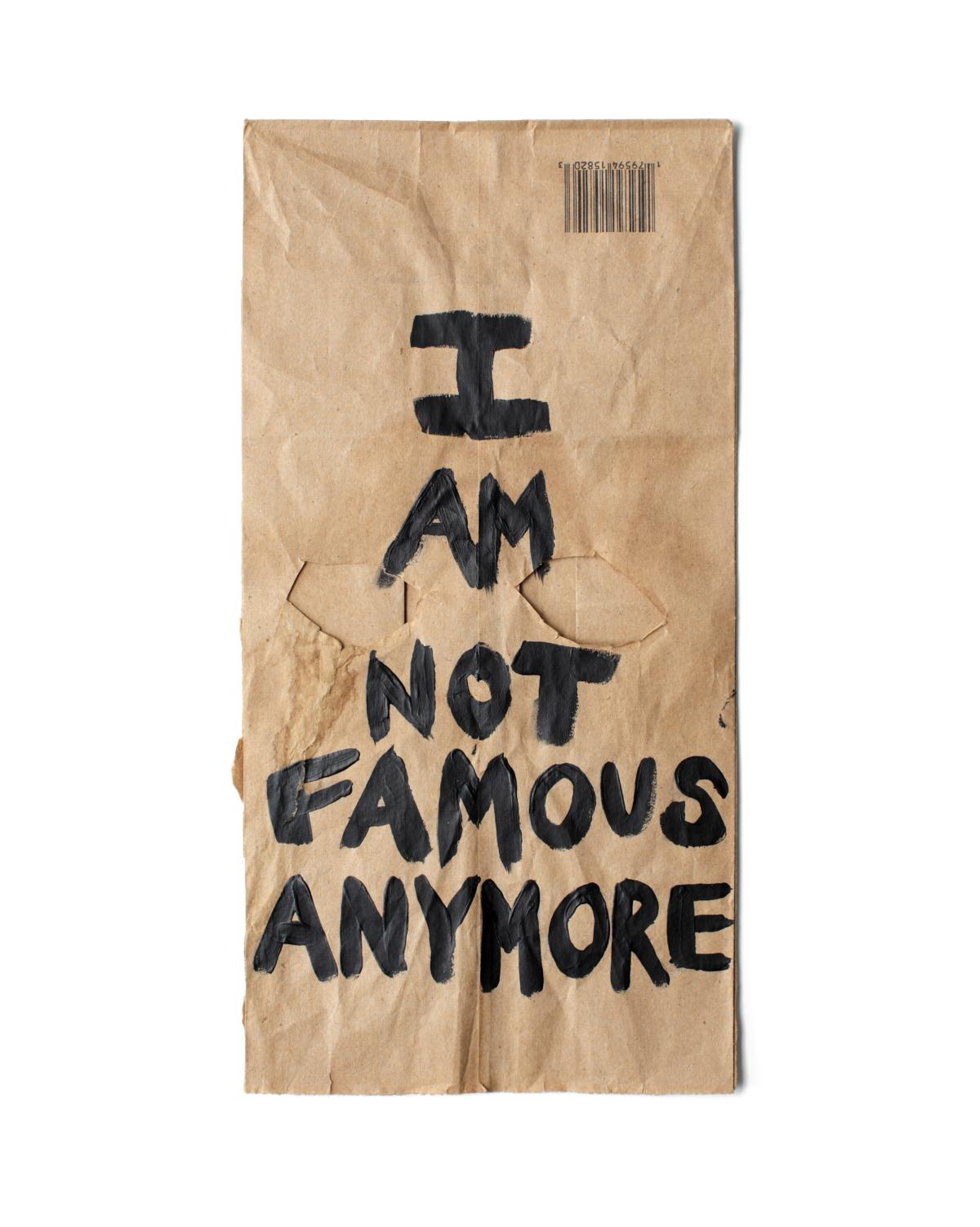
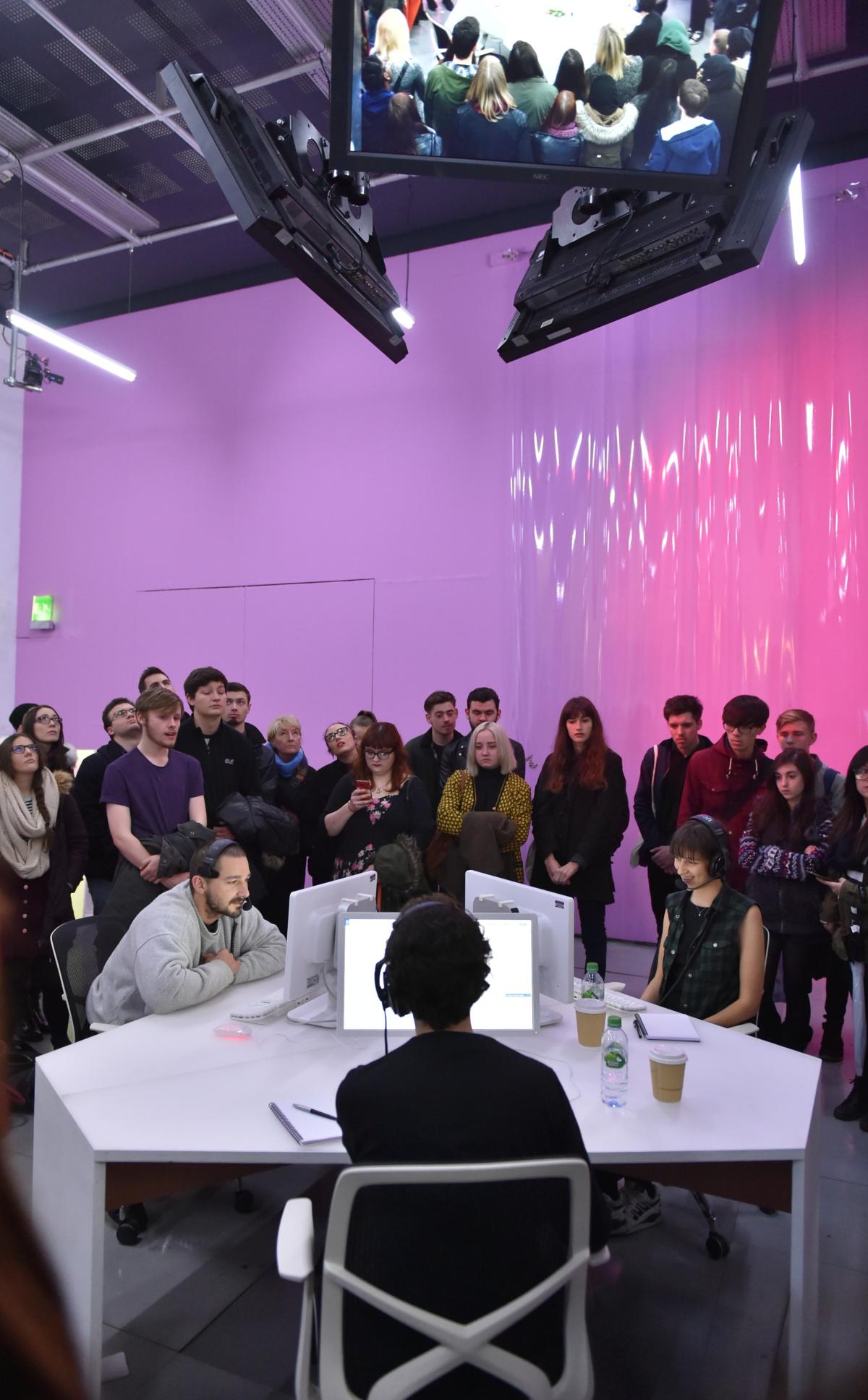
In our work, there was no Artist with a capital ‘A’ to be present, there was no spectacle within the gallery, removed from the outside media hysteria.
Well, it shows perhaps how fake is real… Or how fake is art? There was also an interesting reaction to #IAMSORRY piece.
For #IAMSORRY, we put out just a single line press release, stating simply that Shia was “sincerely sorry”, and that he would be in situ for the duration. We didn’t state anything beyond that. Yet the reaction the work immediately provoked really highlighted how people—especially in the media—felt entitled to act and project their prejudices onto something entirely removed from the reality of our performance. On that level, I think it was an extremely revealing and powerful work.
I think it is because you’ve also touched that neoliberal order which allows a one direction move; you can become famous when you are an artist, but you cannot become artist if you are famous. That is against the mode of production, making money, and social class order as well. The other thing is that you are destroying the myth of the artist.
It’s one of my favorite things to provoke snobby art critics to the point that they say; this is not art, this is not an artist. We’re more than a century on from Duchamp and Elsa von Freytag-Loringhoven, so to say an artwork made by artists isn’t art is probably the most untenable position you could possibly take! A particularly silly Jonathan Jones Guardian article about our work comes to mind, in which he claimed that real artists don’t wear bags on their heads—which is pretty ironic given the rich history of artists wearing masks in 20th century art and beyond… So, yes, our practice does bring to the surface some of the art world’s prejudices and extreme conservatism; their attempts to create arbitrary rules for legitimacy, to say who is and is not entitled to be an artist. When in reality, our artworks are just the result of three people making work together. I don’t cling to any sacred notion of the Artist. Art is more magical than secret.

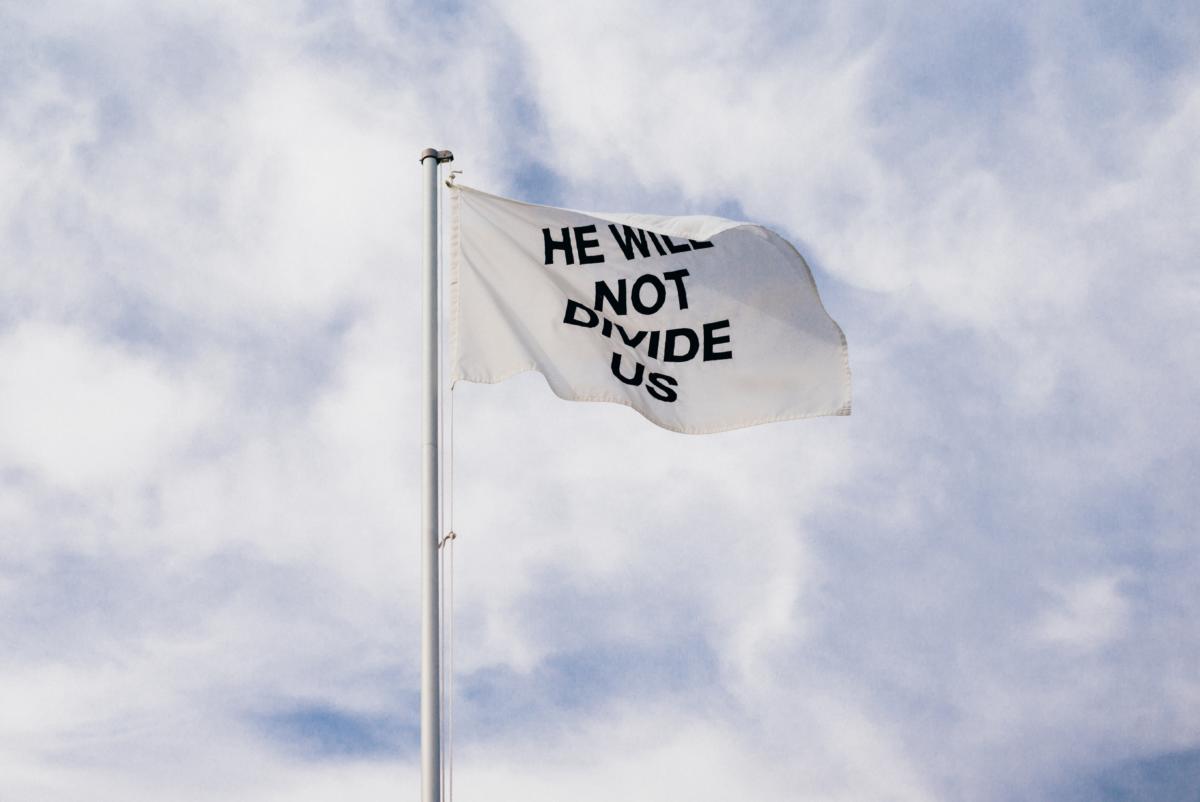
In your ongoing project which is planned for 4 years HEWILLNOTDIVIDE.US. there are definitely more important and not easy issues you bring into surface.
Yes, HEWILLNOTDIVIDE.US started in New York on 20 January 2017 as an open-ended, participatory and durational piece, running for up to eight years, or the duration of the current U.S. presidency. Part of the motivation for making this work came after having traveled across the middle of America during #TAKEMEANYWHERE, and having met people of all political persuasions. We became friends, and are still friends on Facebook. On social media, you cannot really hide what you are for, and conversations start, and somehow you have to deal with it. Then, you start to understand the change that people want, their earnest intentions, despite the reality of what they’re voting for.
HEWILLNOTDIVIDE.US started in New York on 20 January 2017 as an open-ended, participatory and durational piece, running for up to eight years, or the duration of the current U.S. presidency.
As far as I understand HEWILLNOTDIVIDE.US is not, or not only about one particular man in power, but more about what stands behind it and is similar to the processes going on in many other places in the world. I’m thinking of things like huge backlash in terms of woman rights, praise for patriarchy, silent or very open agreement on racism and support for white supremacy, an anti-immigration attitude very often connected with Islamophobia and so on.
Very much so, the work has always been explicitly open. Of course, we use the specific date of the U.S. presidency, which was the impetus to make this work, to take a stand. But it refers to divisions happening across the world right now. We wanted to make a piece that was open to everyone, that stands for hope and togetherness through participation and engagement.
If you look at things like Brexit, or last US elections, it seems that people were voting for some abstract ideas which are rather freely or not at all connected with reality. There is this double meaning of media connection and disconnection. What is the meaning of the fact that you record yourself on the camera for HEWILLNOTDIVIDE.US?
It’s important that the work has a physical centre. There is also a vulnerability to that, to the camera existing as a singular object, which you find that people respect. We’re inviting people to engage, and no matter how people respond, those five words on the wall remain constant, actively revisiting division. You can’t proclaim division to a work whose very title and form is the words He Will Not Divide Us, so it is operating in both directions.


There is also a museum as an interesting reference.
It’s vital for a museum to take a stand, to provide strong institutional support. The work has highlighted the fallacy of the museum as a neutral space. For example, when we were showing the piece at MoMI in New York, a man claiming to be an ISIS suicide-bomber started harassing people. The museum did nothing, and it was left to us as the artists to confront the man. Then, the museum called the police to arrest Shia, not the guy, which was disgraceful… They didn’t do anything with the ISIS guy, I think because he was white. The reaction would have been different if he wasn’t… It sounds absurd, but there is this blurred sphere of responsibility connected with the work of art and the institution, and what a public space is for. At the end of the day, the museum is there to provide safety for the artworks, the artists, and the public. It is an open space, but the law clearly applies there too.
Yet, you try to keep your position transparent.
We’ve always considered our practice as radically transparent. It’s a break from the sort of ‘80s postmodern career artist as trickster. We’re not like that. We reject that. The art world is an extremely elitist and hypocritical place, and perhaps it doesn’t like to hear that, but it’s definitely time to move towards an open and honest art community.
***
#TAKEMEANYWHERE and HEWILLNOTDIVIDE.US by LaBeouf, Rönkkö & Turner are currently on show at Muzeum Sztuki in Łódź (at ms2, 19 Ogrodowa Street) as a part of the “Peer-to-peer. Collective Practices in New Art” exhibition.
Imprint
| Artist | LaBeouf, Rönkkö & Turner |
| Exhibition | Peer-to-peer. Collective Practices in New Art |
| Place / venue | Muzeum Sztuki in Łódź |
| Dates | June 8 - October 28, 2018 |
| Curated by | Agnieszka Pindera |
| Website | msl.org.pl/en |
| Index | Luke Turner Muzeum Sztuki in Łódź Nastja Säde Rönkkö Shia LaBeouf Zofia Cielątkowska |
